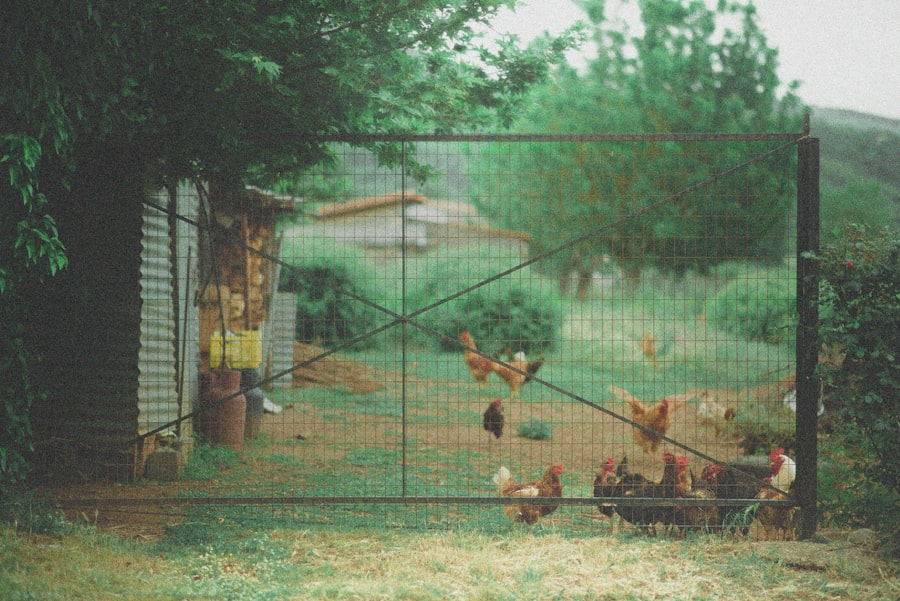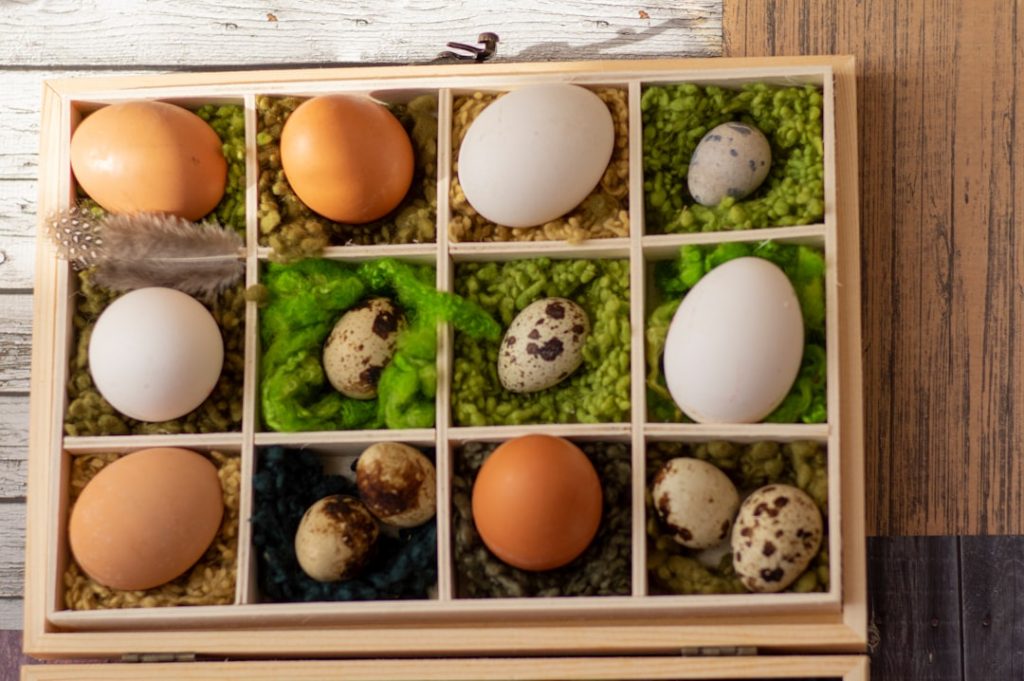Lighting plays a crucial role in the overall well-being and productivity of chickens. Proper lighting is essential for maintaining the health, growth, and egg production of poultry. Chickens, like all living creatures, have a natural circadian rhythm that is influenced by the amount of light they receive.
This circadian rhythm regulates their sleep patterns, hormone production, and overall behavior. Inadequate lighting can disrupt this rhythm, leading to stress, reduced egg production, and even health issues in chickens. Proper lighting also helps to stimulate the pituitary gland in chickens, which in turn regulates their reproductive system and egg production.
In commercial poultry farming, artificial lighting is often used to extend the natural daylight hours in order to maximize egg production. Additionally, adequate lighting is important for the overall health and well-being of chickens. It helps to reduce stress, prevent aggressive behavior, and promote healthy growth.
Therefore, it is crucial for chicken owners to understand the importance of providing the right lighting conditions for their flock.
Table of Contents
Key Takeaways
- Proper lighting is crucial for the health and productivity of chickens
- Choose LED or CFL bulbs for energy efficiency and longevity
- Use a timer to maintain consistent lighting for the chickens
- Place the light source at a height that evenly illuminates the entire coop
- Monitor the chickens’ behavior and egg production to gauge the effects of lighting
- Adjust the lighting schedule to mimic natural daylight changes throughout the year
- Ensure that the lighting setup is safe and energy-efficient for the chickens and the environment
Choosing the Right Light Bulbs
Light Spectrum for Poultry
Full-spectrum bulbs that mimic natural sunlight are ideal for chickens, as they provide a balanced combination of red, blue, and green light. This type of light is essential for maintaining the circadian rhythm and overall health of the birds.
Light Intensity and Illumination
Another important consideration when choosing light bulbs for chickens is the intensity of the light. The intensity of the light should be sufficient to provide adequate illumination throughout the coop or poultry house.
Benefits of LED Bulbs and Avoiding Harsh Lights
LED bulbs are a popular choice for poultry lighting due to their energy efficiency and long lifespan. They also produce minimal heat, which can be beneficial in preventing overheating in the coop. It is important to avoid using harsh or flickering lights, as these can cause stress and discomfort for the chickens.
Overall, selecting the right light bulbs is essential for creating a comfortable and productive environment for poultry.
Setting Up a Timer for Consistent Lighting

Consistent lighting is crucial for maintaining the health and productivity of chickens. In order to achieve this consistency, it is important to set up a timer for the lighting system in the coop. A timer allows chicken owners to regulate the amount of light their flock receives each day, ensuring that they are exposed to a consistent lighting schedule.
This is particularly important for commercial poultry operations, where artificial lighting is often used to extend the natural daylight hours in order to maximize egg production. When setting up a timer for poultry lighting, it is important to consider the natural daylight hours in the region. The timer should be programmed to provide a total of 14-16 hours of light per day, including both natural and artificial light.
This schedule helps to stimulate the pituitary gland in chickens, which in turn regulates their reproductive system and egg production. Additionally, a timer helps to automate the lighting system, reducing the need for manual adjustments and ensuring that the birds receive consistent lighting each day.
Placing the Light Source in the Coop
The placement of the light source in the coop is an important consideration when setting up a lighting system for chickens. The light source should be positioned in a way that provides even illumination throughout the entire space. This helps to prevent shadows and dark spots, creating a comfortable environment for the birds.
It is also important to ensure that the light source is positioned at an appropriate height above the ground. For example, hanging the light source too low can create hot spots and cause discomfort for the chickens, while placing it too high may result in inadequate illumination. In addition to positioning the light source for even illumination, it is important to consider the safety of the setup.
The light fixture should be securely installed to prevent it from falling or causing any hazards in the coop. It is also important to use fixtures that are designed for use in agricultural settings and are resistant to dust and moisture. Overall, careful consideration should be given to the placement and installation of the light source in order to create a safe and comfortable environment for poultry.
Monitoring the Effects of Lighting on the Chickens
Once the lighting system is set up, it is important to monitor its effects on the chickens. Observing the behavior and productivity of the birds can provide valuable insights into whether the lighting conditions are suitable for their needs. For example, increased egg production and overall activity levels can indicate that the lighting schedule is effective in stimulating the birds’ reproductive systems and maintaining their circadian rhythm.
On the other hand, signs of stress or reduced egg production may indicate that adjustments need to be made to the lighting system. It is important to pay attention to any changes in behavior or productivity and make necessary adjustments to the lighting schedule or setup as needed. Regular monitoring of the effects of lighting on the chickens helps to ensure that they are provided with optimal conditions for their health and well-being.
Adjusting the Lighting Schedule for Different Seasons

Seasonal Variations in Daylight Hours
The natural daylight hours vary throughout the year due to changes in seasons. As a result, it is essential to adjust the lighting schedule for chickens accordingly to maintain consistent lighting conditions.
Winter Months: Extending Daylight Hours
During the winter months when daylight hours are shorter, artificial lighting is often used to extend the natural daylight hours and stimulate egg production in commercial poultry farming.
Summer Months: Preventing Overstimulation
Conversely, during the summer months when daylight hours are longer, adjustments may need to be made to reduce the amount of artificial light provided to the chickens. This helps to prevent overstimulation of their reproductive systems and allows them to rest properly during the longer nights.
By adjusting the lighting schedule for different seasons, chicken owners can ensure that their flock receives appropriate lighting conditions year-round.
Ensuring Safety and Energy Efficiency
In addition to providing suitable lighting conditions for chickens, it is important to ensure that the lighting setup is safe and energy-efficient. Using fixtures that are designed for agricultural settings and resistant to dust and moisture helps to prevent hazards and ensure the safety of the birds. It is also important to regularly inspect and maintain the lighting system to prevent any potential issues or malfunctions.
Energy efficiency is another important consideration when setting up a lighting system for chickens. Using LED bulbs can help to reduce energy consumption and lower electricity costs. Additionally, using a timer to automate the lighting schedule can help to optimize energy usage by providing consistent lighting without unnecessary waste.
In conclusion, proper lighting is essential for maintaining the health, productivity, and overall well-being of chickens. Selecting the right light bulbs, setting up a timer for consistent lighting, placing the light source appropriately in the coop, monitoring its effects on the birds, adjusting the lighting schedule for different seasons, and ensuring safety and energy efficiency are all crucial aspects of providing suitable lighting conditions for poultry. By understanding and addressing these factors, chicken owners can create a comfortable and productive environment for their flock while promoting their health and well-being.
If you’re looking for ideas on how to keep a light on for your chickens, you might want to check out this article on The Chicken Coop Country Diner. It offers tips on creating a cozy and well-lit environment for your feathered friends.
FAQs
What are some ways to keep a light on for my chickens?
Some ways to keep a light on for your chickens include using a timer to control the light schedule, providing a safe and secure light source, and ensuring the light is not too bright or too dim for the chickens.
Why do I need to keep a light on for my chickens?
Keeping a light on for your chickens can help to extend their natural daylight hours, which can be beneficial for egg production, especially during the winter months when daylight hours are shorter.
What type of light should I use for my chickens?
It is recommended to use a red or infrared light for chickens, as these colors are less disruptive to their natural sleep patterns. Avoid using bright white or blue lights, as these can cause stress and disrupt their natural behavior.
How long should I keep the light on for my chickens?
It is generally recommended to provide 14-16 hours of light per day for chickens to stimulate egg production. This can be achieved by using a timer to control the light schedule.
Are there any risks associated with keeping a light on for my chickens?
While providing supplemental light for chickens can be beneficial for egg production, it is important to monitor the chickens for any signs of stress or health issues. Additionally, ensure that the light source is safe and secure to prevent any potential fire hazards.
Meet Walter, the feathered-friend fanatic of Florida! Nestled in the sunshine state, Walter struts through life with his feathered companions, clucking his way to happiness. With a coop that’s fancier than a five-star hotel, he’s the Don Juan of the chicken world. When he’s not teaching his hens to do the cha-cha, you’ll find him in a heated debate with his prized rooster, Sir Clucks-a-Lot. Walter’s poultry passion is no yolk; he’s the sunny-side-up guy you never knew you needed in your flock of friends!







